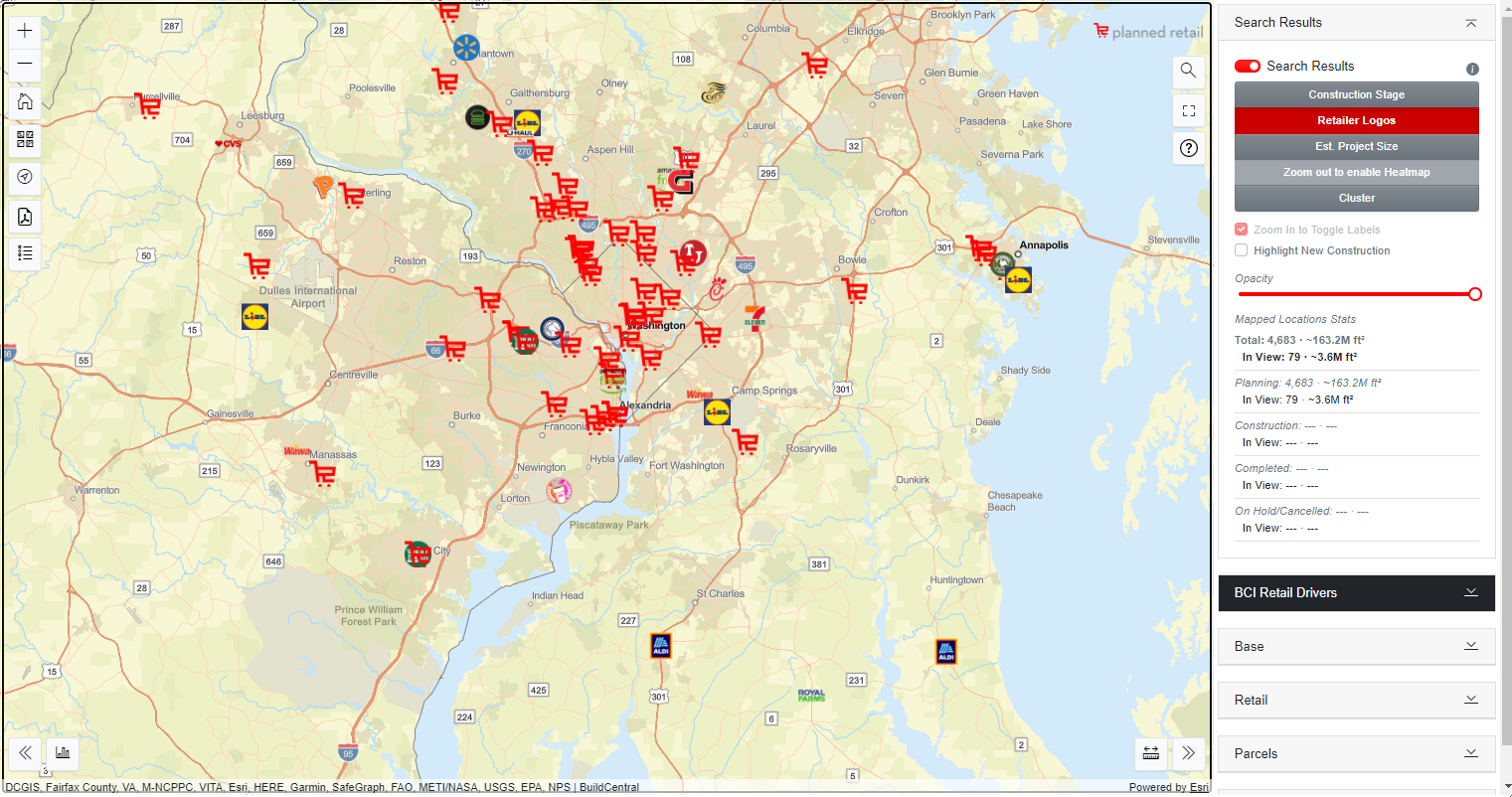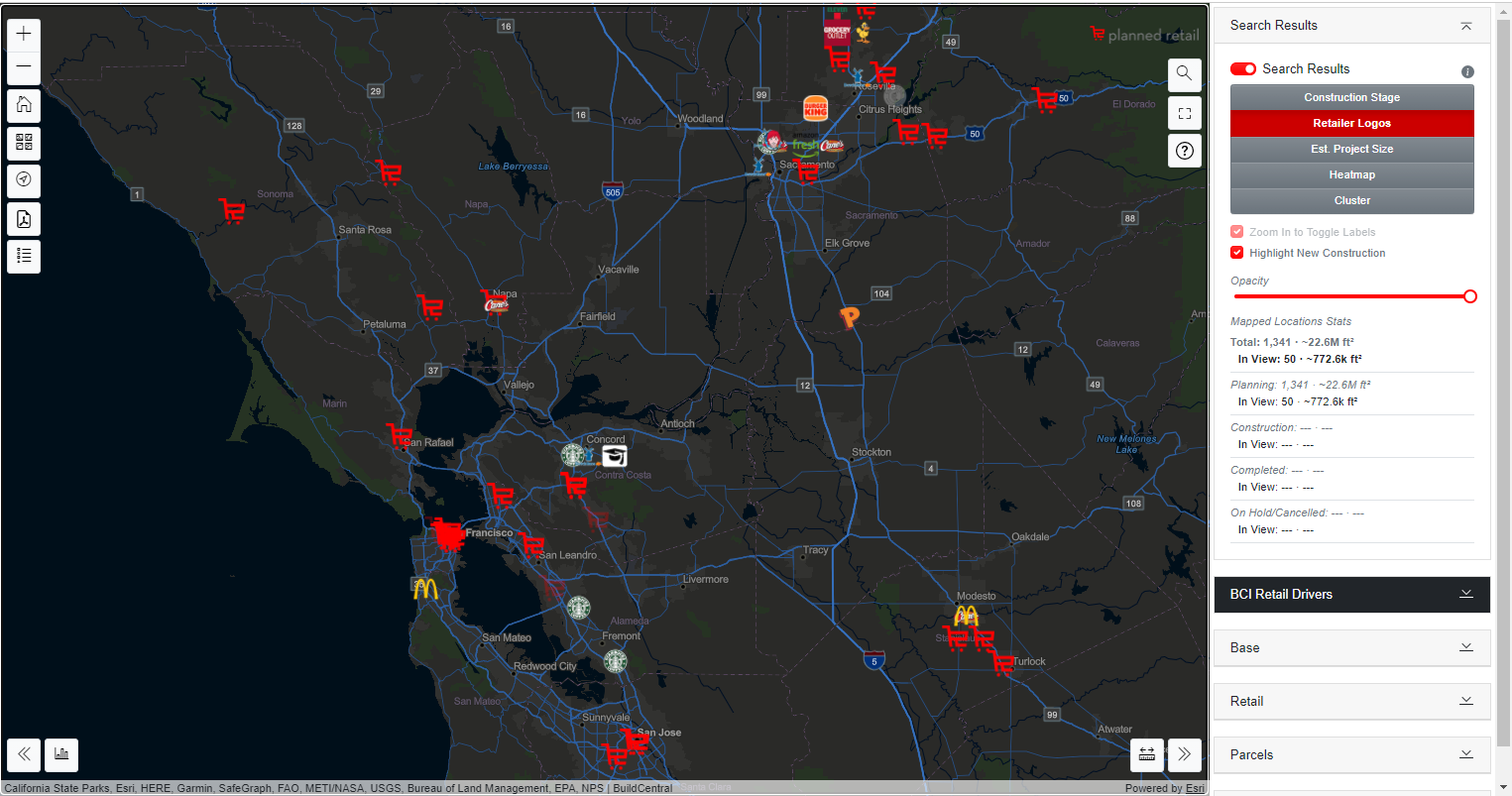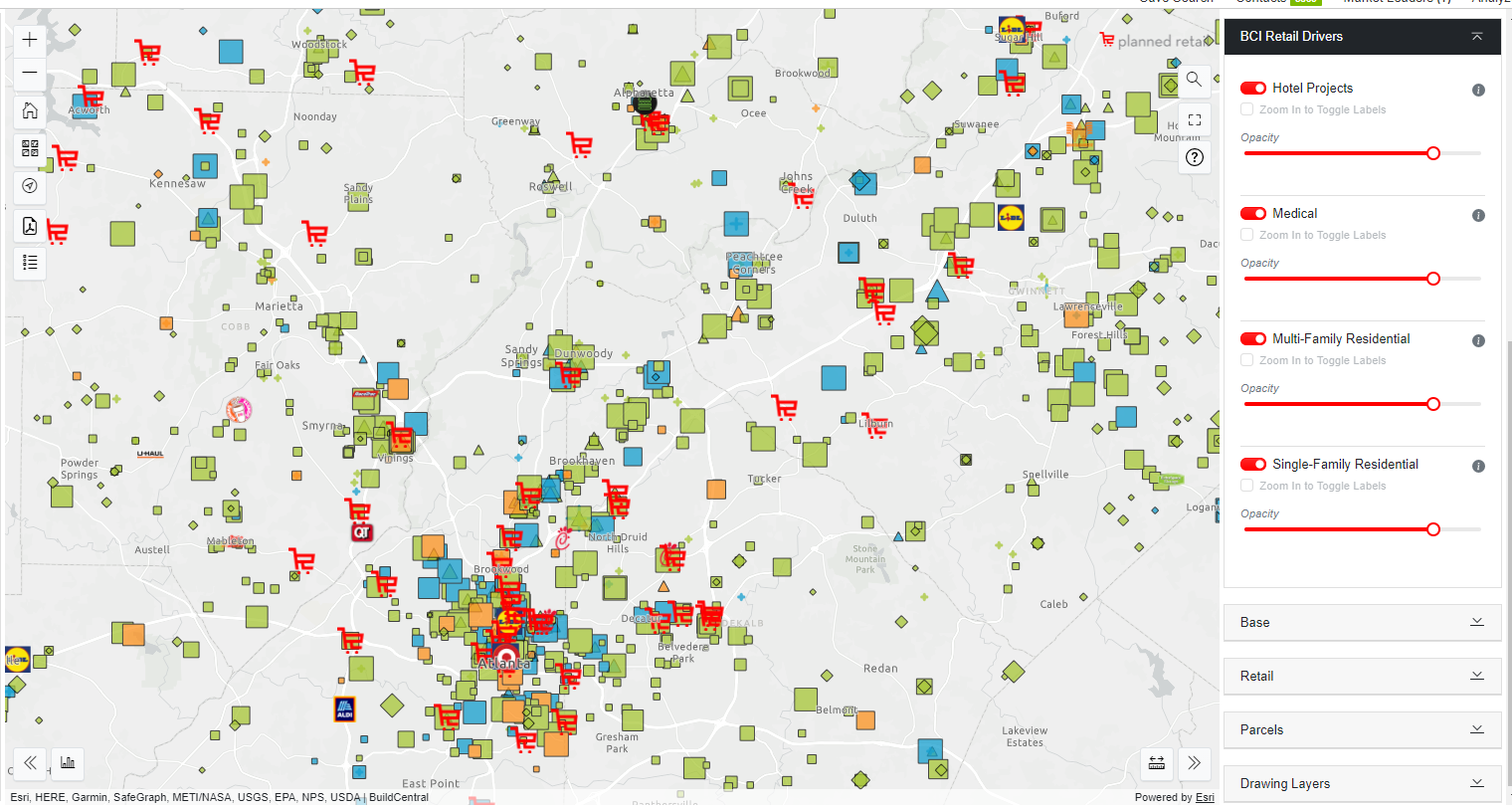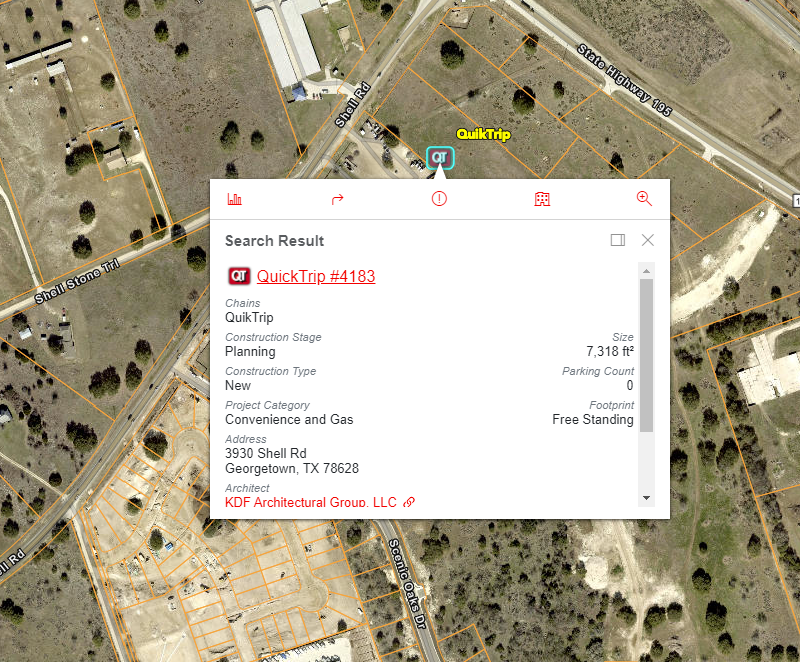There’s new tech enabling retailers, developers, builders and investors to monitor where new developments and stores will be built, the contacts involved and the markets seeing the most growth. The creators of Planned Grocery have released Planned Retail, an interactive database detailing construction projects. Planned Retail head David Beitz spent 14 years managing the GIS team at Edens before launching Planned Grocery in 2016 with partners Todd Atkins and George Daigh. In January 2021, Australia-based BCI Media Group purchased Planned Grocery, and now Planned Retail has launched under BCI U.S.-based subsidiary BuildCentral. Commerce + Communities Today contributing editor Ben Johnson talked with Beitz about the resource.

Walk me through how Planned Retail works.
Planned Retail is designed for folks to see where new retail projects are planned before they start construction. It is really focused on people in the commercial real estate space that are interested in tracking who is going where in the retail world. Basically, it is a very graphic-oriented way of zooming in on markets and seeing, for example, where all the Dollar Generals are planned or where all the Starbucks are planned and just being able to see all this retail construction activity. On top of that, we also added daily drivers to the platform where you can see where construction projects are planned that will affect new retail sites, such as offices and schools and hotels and medical, so it is really a pretty cool way of being able to see just all the activity in the different markets across the U.S.
So, though the platform is called Planned Retail, it goes beyond just retail development.
Exactly. With Planned Grocery, a lot of folks kept saying, “We love Planned Grocery, but we wish that you would track more than just grocery.” Now that we are tracking planned retail, that is a huge data set. But we are also able to layer in all of the other planned data sets from other sectors. It just gives you a real unique view of what is going on. People use it for competition tracking, site selection, to help buy and sell shopping centers and that kind of thing.

Retail construction planned around Washington, D.C.

Restaurants planned for the Bay Area and Sacramento
How does this help various players in the marketplaces sector?
Let’s say that you are a retailer that likes to be in a grocery-anchored center. This platform would be a good fit for you to see where those grocery-anchored centers are planned. Or let’s say you like to be near a Starbucks or a Chipotle or something like that. You can see where those locations are planned, and then you might want to locate your next development near one of those or use the information for site selection. This is a good database to use if you are going to buy a shopping center; it’s good to know what other retail is planned nearby. If you own a shopping center and you see things that are planned nearby, it helps you in your planning, as well.
How is this priced for sale?
We have three different levels. One is Planned Retail by itself. The next one is Planned Retail with single-family/multifamily, and then the third level is Planned Retail with all the daily drivers including single-family, multifamily, office, hotel, medical, planned schools, all that. We have had a lot of interest in the multifamily and single-family data recently because if you are thinking about building a retail center or a retail location, that is going to help your numbers and help your sales estimates. We do have plans based on the number of users and the number of regions that people use, if they only want a four-state plan or if they want a 10-state plan. It is all very dependent on the customer and what all they need.

Planned retail projects in the Atlanta area with BCI data on planned residential, hotel and medical to indicate coming demand.
Where do you source the data?
The data comes from four different places. We have a pretty extensive search algorithm through Google alerts where we look at news articles. We also look at planning documents like the minutes from planning meetings and planning agendas. Social media posts are also a source, and we also get information from parcel data from change of ownership information.
And all of this is accessible online, 24/7?
Exactly. It is all hosted in the cloud, and we also have API data feeds that go into other platforms, so users of ESRI Trade Area systems, Intelletics, Cherre can get set up on our API so that data can be pulled into other systems, as well.

How has the connection to BuildCentral been beneficial?
We built up Planned Grocery for about eight years, and then BuildCentral purchased us. We had hundreds of users with Planned Grocery, but now, with BuildCentral, we have over 8,000 users in the U.S. using the BuildCentral data. If you include the parent company, BCI Media Group, it would be about 50,000 users because they also track construction information in Australia, New Zealand and Southeast Asia. BuildCentral [is based in] Chicago, so we went from a team of five people to over 100. We have 40 people in Chicago that focus on research, and they work with another 60 people in the Philippines. They are constantly updating all of these different databases that we have. We have a lot more resources [and] a lot bigger research team and we have been able to roll out this Planned Retail product with a much bigger team.
It is too early to tell how it’s going to go as far as growth in users, but we have had a lot of interest just in the past couple of weeks in it. The really great thing about Planned Retail is that it’s the first product from BuildCentral that brings all of their databases into one mapping interface. Before, you had to go to different search windows to search for hotel and then medical. Now, you can have a really huge search focused on retail, but you can also layer in these other databases to see what is going on.
What’s next?
We are going to be very focused on marketing automation to make it easier for people to run reports, to submit a site to maybe Publix or Starbucks and say, “This is a good site because look at all this planned activity around there.” We also track information on the architects, general contractors and the developer/owner operators, so we are going to do a deep dive into contacts for people to get more information about the retailer.